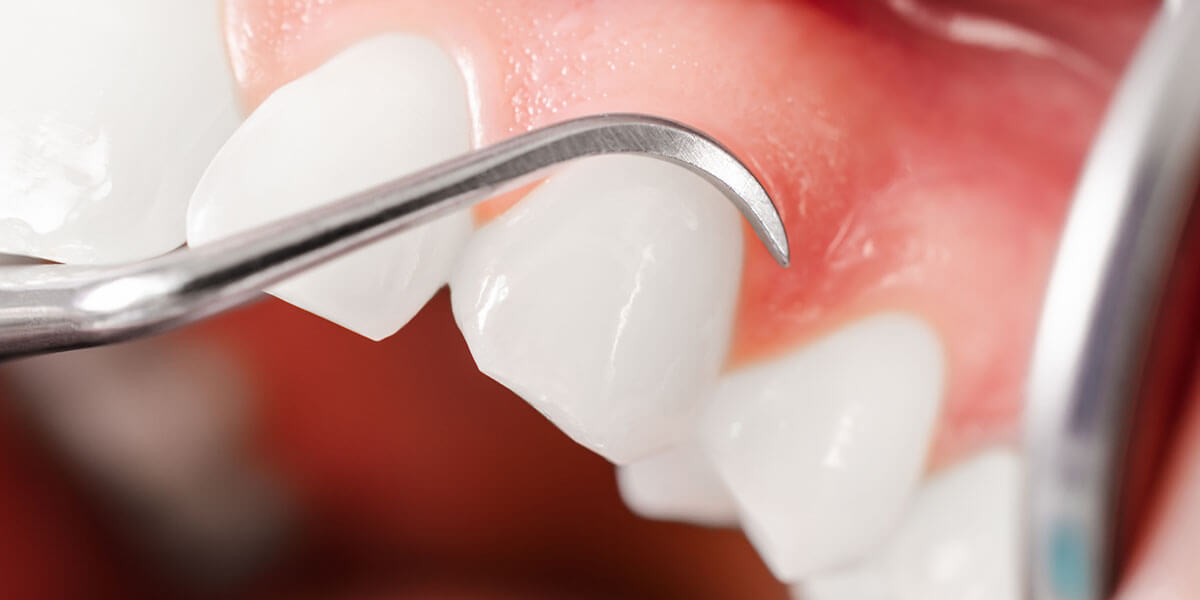Scaling and Root Planing

Life Dental Specialties provides scaling and root planing in Springfield and Hadley, MA. Call to learn more and schedule your appointment.
Scaling and root planing is usually the first line of therapy for gum disease. When used in the earliest stages of gum disease, this minimally-invasive, non-surgical approach can reverse the infection before it causes lasting damage to your teeth, gums, and jawbone.
More About Gum Disease
Gum disease occurs when plaque and tartar collect just below the gumline, harboring bacteria that causes infection. And it is one of the most common causes of tooth loss. The first signs of infection are redness and swelling in the gums. Over time, you may also notice that your gums bleed easily, you have bad breath, and your gums are beginning to recede, forming deep pockets where bacteria may collect.
When left untreated, gum disease begins to attack the structures that support your teeth. As bone in the jaw is lost, your teeth begin to loosen and shift in your mouth. Eventually, tooth loss can occur.
In addition to the impact on your teeth and gums, gum disease impacts your overall health and well-being. Multiple scientific studies have shown links between oral health and diabetes, heart disease, pregnancy complications, and Alzheimer’s disease. Given this, treating gum disease promptly is important.
Stages of Gum Disease
Gum disease - also known as periodontal disease - comes in four stages.
Stage 1: Gingivitis. Gums are irritated and inflamed due to plaque buildup. This is the earliest stage of gum disease - and the only stage that can be reversed.
Stage 2: Early Periodontitis. During this stage, gums become more inflamed and pull away from the teeth. As a result, pockets are left to gather bacteria and food particles, leading to plaque buildup and infection.
Stage 3: Moderate Periodontitis. The inflammation grows and the symptoms grow more severe. Bone loss, loose teeth, and gum recession may occur.
Stage 4: Advanced Periodontitis. The most severe stage of gum disease, the infection continues to grow, abscesses occur, and tooth loss is inevitable.
While only gingivitis can be reversed, taking advantage of treatment such as scaling and root planing can slow down the progression of periodontal disease.
What Happens During Scaling and Root Planing
Scaling and root planing is sometimes called deep cleaning, and for good reason—the process is very similar to the teeth cleaning performed at your dentist’s office, but it also cleans your teeth below the gumline.
The process begins with scaling, which removes plaque and tartar from the entire tooth surface, including just under the gums. Plaque and tartar harbor the bacteria that causes gum disease; removing the source of the infection gives your gums the opportunity to heal. Next, root planing smooths the roots of your teeth, which encourages your gums to reattach, reducing the periodontal pockets where plaque and tartar collect.
After scaling and root planing, you’ll need to take steps to maintain your periodontal health. Dr. Quinta works with each of our patients to establish a custom oral hygiene program that addresses their unique needs.
Frequently Asked Questions
Call to learn more and schedule your appointment.
